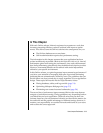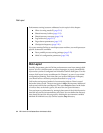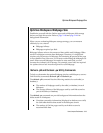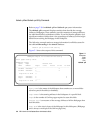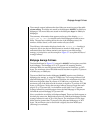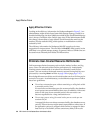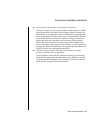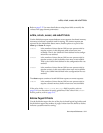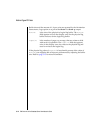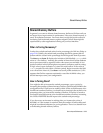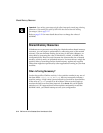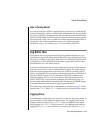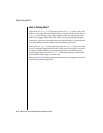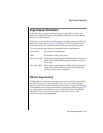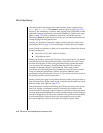
How to Improve Performance 5-11
ovtbls, ovlock, ovuser, and ovbuff Fields
Refer to page 5-17 for more details about using these fields to modify the
values of the page-cleaner parameters.
ovtbls, ovlock, ovuser, and ovbuff Fields
Use the fields that report unmet database server requests for shared-memory
resources to indicate a possible need for tuning. The unmet requests are
reported by the DB-Monitor Status menu, Profile option or as part of the
tbstat -p or tbstat -P output:
The tbstat output contains a fourth field that reports on unmet requests:
If the value in the
ovtbls, ovlock, or ovuser field is positive, refer to
page 5-14 for a discussion of tuning guidelines. If the value in the ovbuff
field is positive, refer to page 5-13.
Bufsize Pages/IO Fields
Use the fields that report the size of the physical and logical log buffers and
the fields that report the number of pages written from the buffer to disk to
indicate a possible need for tuning.
ovtbls
is the number of times that an OnLine user process tried to
acquire an entry in the tblspaces table when none was
available. That is, the TBLSPACE limit defined in the configu-
ration file was reached.
ovlock
is the number of times that an OnLine user process tried to
acquire an entry in the lock table when none was available.
That is, the LOCKS limit defined in the configuration file was
reached.
ovuser
is the number of times that an OnLine user process tried to
acquire an entry in the users table when none was available.
That is, the USERS limit defined in the configuration file was
reached.
ovbuff
is the number of times that an OnLine user process tried to
acquire a shared-memory buffer when none was available.



